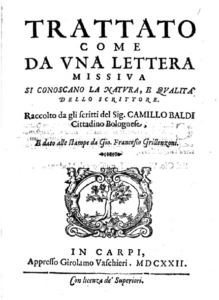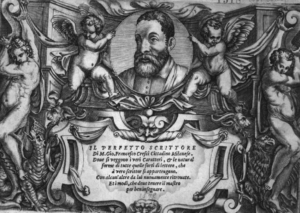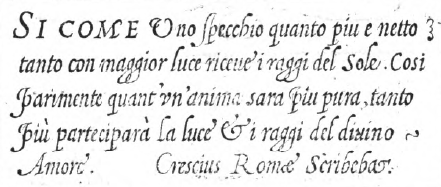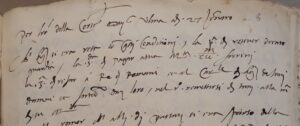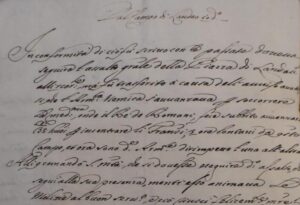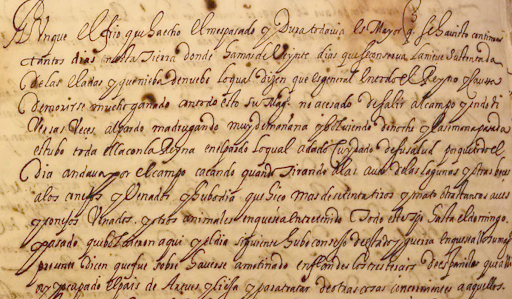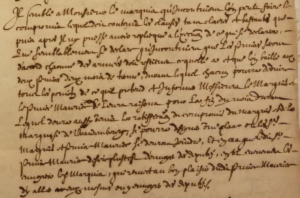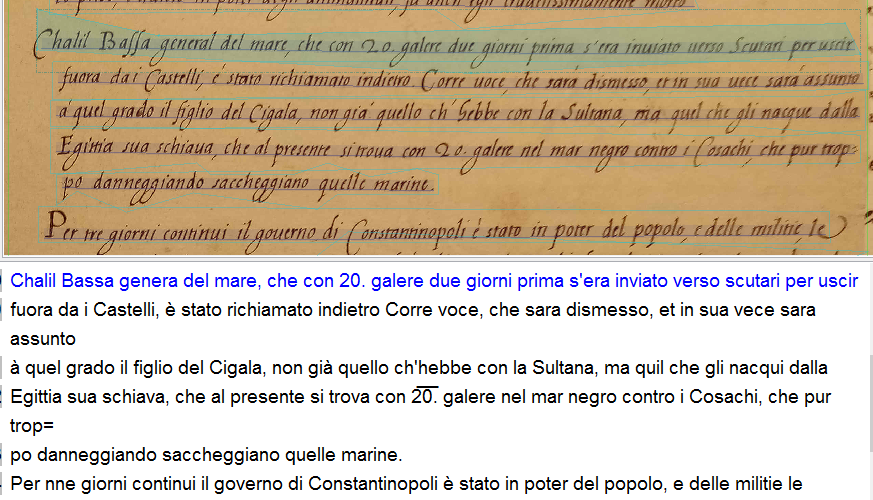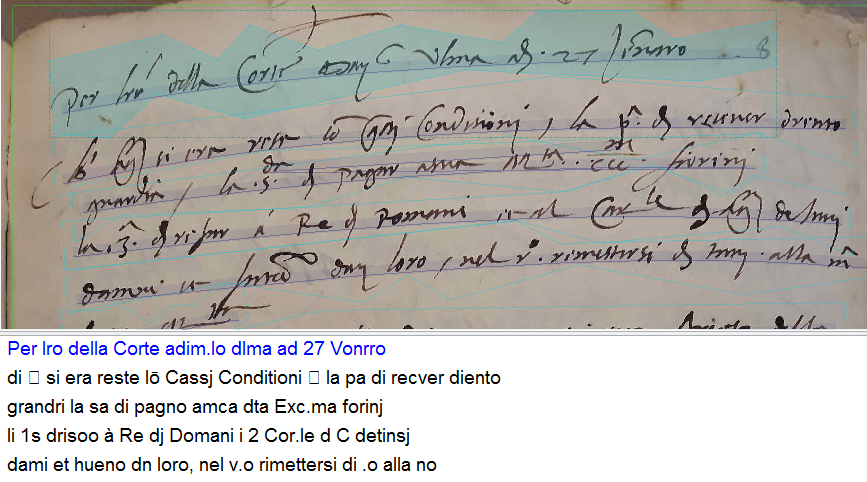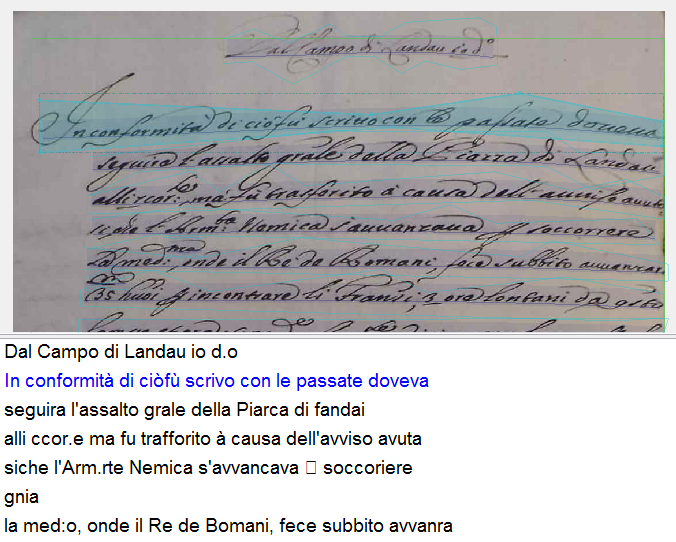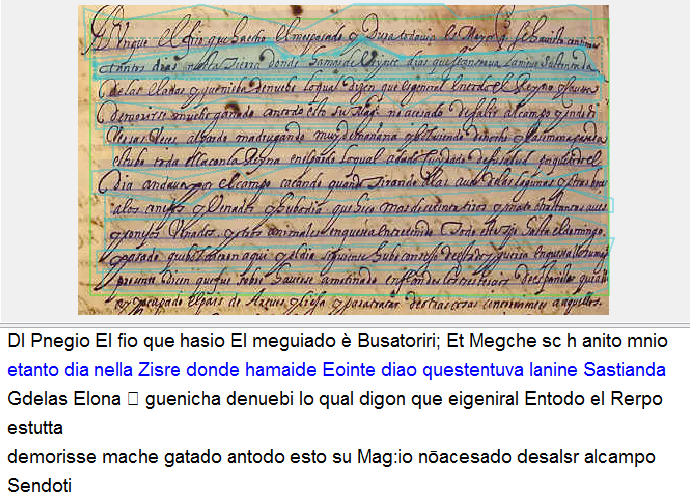A LEGIBLE HAND
When Camillo Baldi investigated the ways and means of detecting human personality through the symbols scrawled by pen on page in a 1622 treatise on “how a single piece of correspondence can reveal the nature and quality of a writer,” there was already plenty of precedent for his approach. In an early modern world where the communication medium par excellence involved handwriting applied to paper, the means and modes of script were the object of intellectual discussion, theoretical pondering, instructional guidance, and professional training.
Already in 1570 (Rome) Giovanni Francesco Cresci published a comprehensive manual on “the perfect writer” including examples of chancery, ecclesiastical and mercantile hands proper to the three typical environments where masses of writing were being produced.
Our research has identified examples aligned with all three of these typologies, but for the moment let us consider this newsletter from the volume 2863 of the fond Mediceo del Principato, containing letters and avvisi from the Republic of Ragusa:
In Cresci in fact we find the following, tagged as a “Lettera cancelleresca also called formatella”. Pretty close?
The slight slant seems almost at the same angle from perpendicular; and the descenders seem to reach almost the same distance below the base line, as also the ascenders above. Look at the letter “h” to find a very close similarity; and the letter “g” a slight difference, with the Cresci example showing slightly more roundness. On the other hand, serifs in the newsletter all point left, whereas Cresci often has them pointing to the right; and newsletter upper case “C,” unlike Cresci’s, extends below the base line. So much for uniformity!
While standard typology and authors’ inclinations are key elements in categorizing scripts, date gives important indications too. Consider this striking example from a London newsletter dated 1702 (Mediceo del Principato, volume 4191a).
Apart from the evident signs of haste, this handwriting exhibits a degree of cursivity when two different letters, for example “di”, are traced with a single line.
Yet another frame of comparison comes from the location of the writer, and of course the language. In the light of what we have seen so far, consider this 1600 Spanish newsletter from Madrid (Mediceo del Principato, volume 5053):
The form of the letters, for example, the upper case “A” in the first sentence here is distinctly more florid than the Italian examples from the same period.
Or consider the following copy of a French proclamation, sent by a correspondent with other news in the same year, 1600 (Mediceo del Principato, volume 4256):
Here we have almost no slant, and there are intense ligatures with low differentiation between characters such as “m” and “u”.
Indeed, the variety of scripts from century to century, from place to place, and from person to person is a challenge not only for our research, but also for the possible application of automatic transcription tools. Much experimentation has been taking place regarding the possible use of Handwritten Text Recognition (HTR) techniques for transcribing the material in historical documents. For instance, Sara Mansutti, member of our team, in collaboration with Jake Dyble (University of Exeter and Università di Pisa), Antonio Iodice (University of Exeter and Università di Genova) and Rachel Midura (Virginia Polytechnic Institute and State University), is training a model to transcribe automatically and with fair accuracy Italian administrative hands ranging between 1550 and 1700. They are using Transkribus, a comprehensive platform for the automated recognition, transcription and searching of historical documents. Among the various tools offered by Transkribus, it is possible to select a model, chosen on the basis of the script, the date and the language of the document, and to run the handwritten text recognition to obtain a computer-interpreted transcription. Unfortunately, no existing model could be applied to Italian Early Modern documents and the idea of collaboration to train a new model was born. To create a model, the machine has to be “fed” with a consistent number of transcriptions made by humans, in order to learn which signs correspond to letters, numbers, punctuation and to build a vocabulary. The matter becomes more complicated in the case of documents with the same script (chancery) but different hands, as in the case of the avvisi. To be able to read different hands with good accuracy, the number of transcriptions for the training must be increased and it is also important to vary the type of documents so that the model can be used extensively. Let’s see how the model (which will be released before the end of the summer) works with the previous examples:
The model makes magic with the first hand, because it is clear and regular without ligatures between the letters, but also the London newsletter in the third example is comprehensible. The model does not give good results with the second hand, which is difficult to read even to humans, and in the last example, where it recognizes some characters but the change of language does not allow it to draw from its vocabulary to recognize the words.
Perhaps one day such instruments will achieve an acceptable level of efficiency in our context, and we will be testing them over the next weeks and months. For now, our best instruments for reading script are eyes and brains!
Many questions still remain in this aspect of our research. Among the more tantalizing, we wonder, beyond categorizing and dating our scripts, will we ever be able to divine the character of our writers? Stay tuned for more results!
Brendan Dooley & Sara Mansutti
[1] Francesco Ascoli, Dalla cancelleresca all’inglese. L’avventura della calligrafia in Italia dal Cinquecento ad oggi, Alessandria: Edizioni dell’Orso, 2012, p. 157
